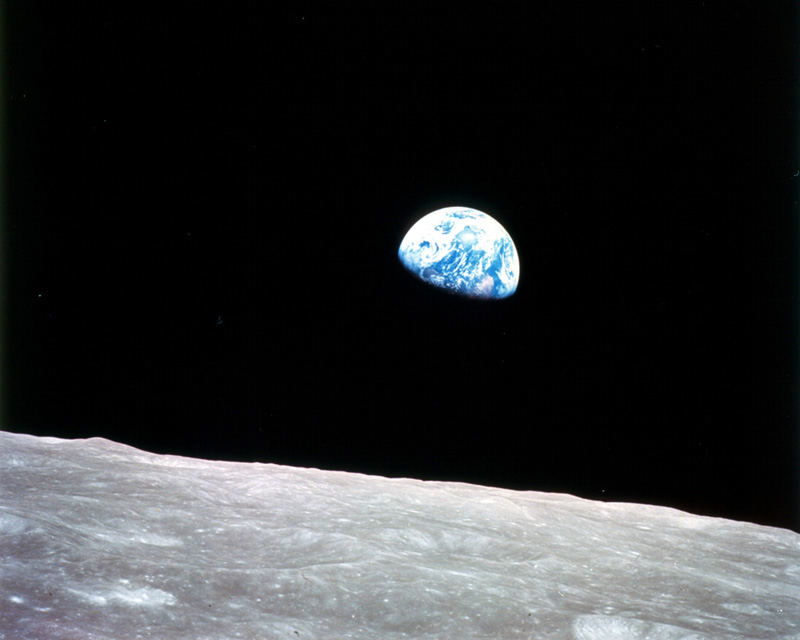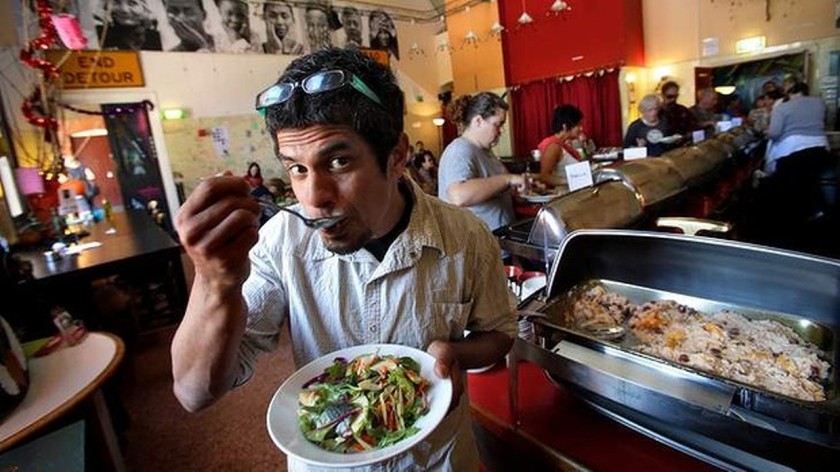In December 2008, when talking about Earth-threatening asteroids, I referred to Planetary Defense, an excellent documentary film made by Canadian filmmaker M Moidel, who runs the Space Viz production company.
Since its 2007 release, the film has inspired discussion and debate. It had its global premiere at the UN Headquarters, and been screened at high level meetings of people who share this concern. It has also been broadcast on United Nations TV and various TV channels, and is available on DVD.
Synopsis: Scientists and the military have only recently awakened to the notion that impacts with Earth do happen. “Planetary Defense” meets with both the scientific and military communities to study our options to mitigate an impact from asteroids and comets, collectively known as NEO’s (Near Earth Objects). Who will save Earth?
In the aftermath of the meteor that exploded in the skies over Chelyabinsk, in Siberia, Russia, on 15 February 2013, I interviewed Toronto-based M Moidel by email on the continuing relevance of his film. Excerpts from that interview:
How did you choose this topic for a scientific documentary?
I take a great interest in writing/filming subject matter which is so big, that it should shape the way we go about our daily lives, like if we contacted extra-terrestrials (ETs), or colonized Mars. Those big events would have major consequences on our re-thinking of our real place in the Cosmos.
The threat of being wiped out by an asteroid is similarly humbling. Most of us don’t think about Extinction Level Events on a day-to-day basis and what we might do about it.
How realistic are the prospects of a large enough asteroid colliding with our Earth?
David Morrison (former NASA Space Scientist) said in my film, Planetary Defense: “If we actually found an asteroid on a collision course, we could predict the impact decades in advance. And we believe we have the technology in our space program to deflect it, so that the event doesn’t even happen. I could study earthquakes all my life, and I might be able to improve my ability to predict them, but I could never develop a technology to stop an earthquake from happening. In studying asteroids, I not only have the potential to predict the next calamity, but actually to avoid it.”
Interview clip with NASA scientist David Morrison:
I like to present the options where we have the ability to change our destiny (or not act upon it at all). That’s a story that interests me. (Besides, it’s the ultimate literary conflict: Man vs. Nature!) It’s that ability to do something about possible calamity (as Neil deGrasse Tyson, Astrophysicist and Frederick P. Rose Director of the American Museum of Natural History, says in my film) that leaves the viewers “scared for our future, but empowered to do something about it”.
What was the most surprising element you uncovered during your information research for this documentary?
There were several surprising factoids:
• The fact that only a handful of people, a hundred or so around the Earth, are working on the NEO Mitigation Hazard issue.
• The fact that so few people think about something that is unlikely to happen in our lifetime — but the consequences of not doing something about it are too horrible.
• The fact that we COULD do something about it, unlike the dinosaurs, because we have a Space Programme!
• The fact that there is so little day-to-day concern or knowledge about it among ordinary (non-technical) people.
• The fact that so little (sustained or pulsing) force is required to move a big asteroid or comet (once it is de-spun) so that it misses the Earth entirely.
As Arthur C Clarke concluded in the last interview clip in Planetary Defense (before the Epilogue): “The dinosaurs became extinct because they didn’t have a space programme!”
What were the reactions to your film ‘Planetary Defense’ when it was first released in 2007?
Prior to the final edit, I sought out editorial reviews from the key participants. The scientists who participated in it also advised me as they each received advance copies. I listened to each expert and made appropriate changes so I knew the content would be spot-on.
The reaction, upon release, was spectacular! There are four major reviewers of educational content in the United States. To get a review from any one of them is not easy. “Planetary Defense” received two of the four with simultaneous reviews in both “Booklist” (Chicago) and “The Library Journal” (NYC).
Following that, the United Nations TV premiered it understanding immediately how this is a global issue. It has aired in Canada a few years running.
The infamy was not comparable to the effect of Orson Welles’ (1938) CBS radio broadcast of H. G. Wells’ novel “The War of the Worlds” (1898) elicited on the public; but I was happy with the appreciation from both the scientific and educational communities.
Of course the comments speak for themselves – see: http://www.spaceviz.com/img/Planetary_Defense_comments.pdf
Spaceguard is a scientifically credible concept, yet it has not received too much political support. Why?
For two reasons. One, policy makers have limited budgets. They ask: “Who was the last person to die from an asteroid impact? After the laughing subsides, the vote is taken (if any) that this issue can be kicked down the line for a few more years, to the next administrations’ budget.
Two, the second reason is also sad. Humans have very little memory for horrible events unless it happened to them, as a people or a country.
For example, outside Indian Ocean rim countries and Pacific island nations (that are exposed to tsunami hazard), how many westerners really empathize and think regularly about tsunamis? About 250,000 people perished in the Boxing Day tsunami of 2004, and yet it’s a bygone memory outside those affected areas.

Can the Siberian meteorite on 15 February 2013 change this?
Siberia just experienced an actual airburst, a one in a 100 year event. This time around, unlike the 1908 Tunguska event, there were plenty of video cameras to record the event from all angles. After going viral for not even a week, the story has died down from the news (not enough devastation or death?) and people are going about their daily business.
Although the Russian government is now calling for Space-faring nations to cooperate and work on a Space Defense or Planetary Defense, it might take a few more near-misses, on a regular basis, to make any real ‘impact’ in human beings acquiescence to this threat!
What, in your imagination, is the best thing that can happen for political leaders to take NEO impact threat more seriously?
Well, it almost happened with the airburst over Siberia. As I said, we have short attention spans (when not enough death and destruction) or when it doesn’t happen to “us”. So either more regular, deadly impacts are required — or hopefully, films like mine can wake up a few more policy makers before all that death and destruction occurs. I’m doing my part…
‘Planetary Defense’ sounds a bit Utopian on a highly divided planet?
Well, that’s an excellent question. But at the risk of repeating myself, people have short attention spans — and shorter memories when it doesn’t affect them directly.
What’s odd is it does affect all of us directly — and we can do something about it! It is not cost-prohibitive either to search for NEOs, test deflection mechanisms or actually engage in a defensive mission.
Currently, NEO searches are being done on minimal budgets. The how-to’s are being thought out by some of the greatest minds on the planet. The military is (also) awakening to the threat.
The recent airburst over Siberia has fueled Russian interest in Space Defense technology. Decades of planning, command and control, NEO characterizations and deflection techniques — all these are critical in mitigating impacts with the Earth. All these aspects are covered in my film (aside from an overview of the subject). The road map is in place!
For all these reasons and more, my film is still very timely! So yes, we can all come together to work on this because it’s not cost-prohibitive (and the cost of doing nothing is simply…unthinkable).
Sir Arthur C Clarke, who gave you an interview, called Planetary Defense ‘one of the most important documentaries made’. Why?
Humanity’s view of ourselves changed in 1968 after seeing Earth as a whole planet floating in the darkness of Space (Apollo 8 photographs). From then on, we started thinking a bit more globally.
Perhaps it won’t take a deadly impact nor a Utopian dream. Perhaps knowledge of the threat from ‘out there’ might finally imbue logic upon the denizens of Earth and we can act as one world (or at least one people) in the cause of self-preservation and the continuation of ‘life as we know it’. There is no “Plan B for Planet Earth”.














